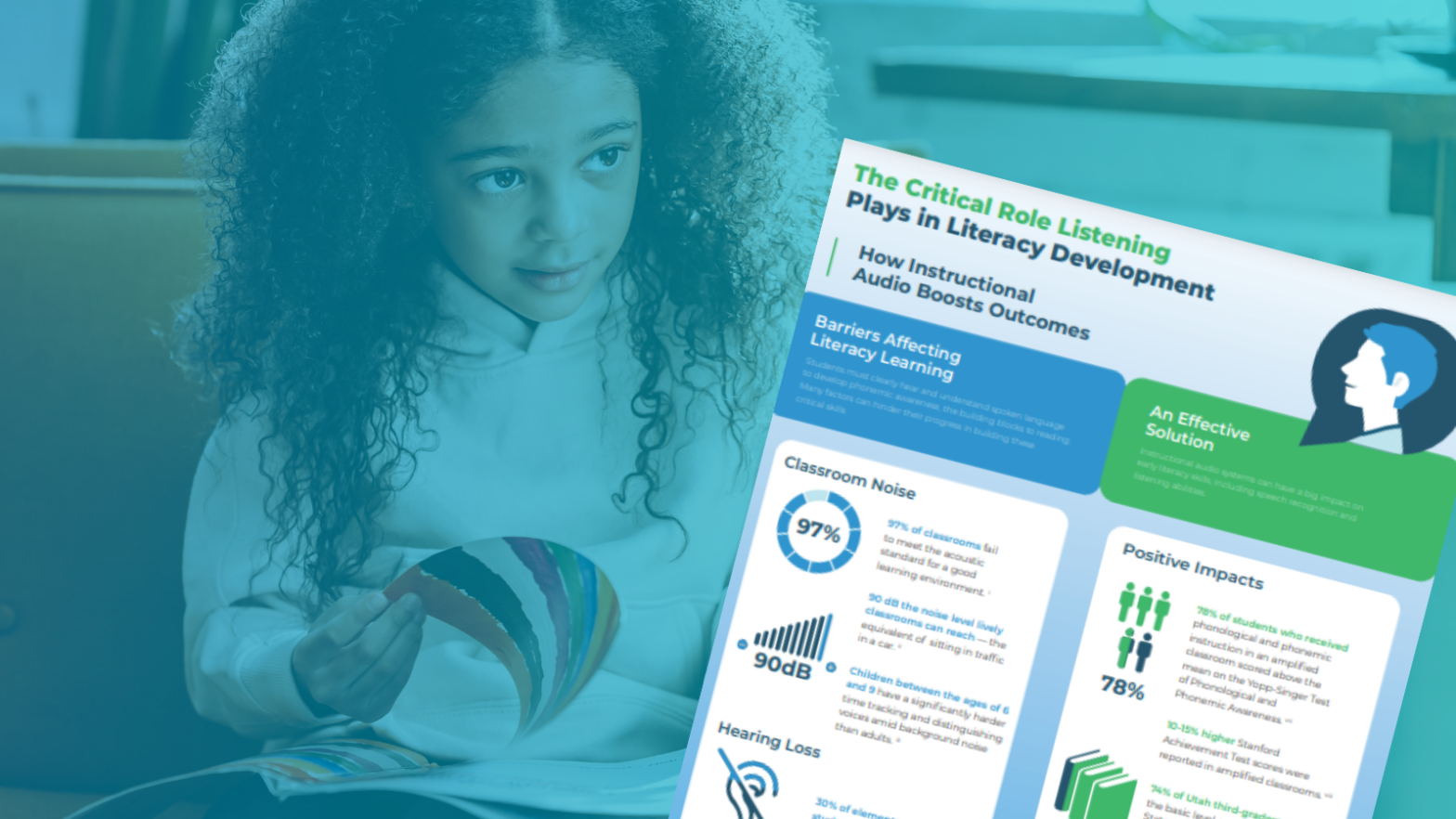How a Principal Inspired an Innovative Classroom Audio System
by Dolores Girbouski, Ed. D.
During my career as a school leader, I often had companies try to convince me to buy their products. For the most part, when I would say yes or no to what they offered, that would be the end of it. Once, though, my colleagues and I went beyond being purchasers and became partners in the product-development process.
At the time, I was the Principal of Columbus Park Elementary School in Worcester, MA. The school had a racially and ethnically diverse population, many of whom qualified for free and reduced lunch. We had moved the student achievement levels significantly, but we had more work to do.
The unique collaboration began when David Solomon and Tom Gilmartin from Lightspeed Technologies came to the central office’s Manager of Supplemental Support and suggested that we pilot a portable amplification system that delivered clear audio to the entire classroom. I looked at the system and said, “Fine, but we don’t teach the whole class that often. We do an introduction, and then move into small groups, then do a summary of the lesson.”
David, Tom and I took a walk through some classrooms, where they saw Columbus Park’s approach to teaching and learning firsthand. I also had teachers talk to them about their framework for supporting all students to meet the standards stipulated by No Child Left Behind (NCLB). I suggested that instead of a one-way speaker, what we needed to support the way we taught was a two-way system that would allow teachers to have conversations with many groups throughout the classroom.
They agreed and starting that day I worked with David, Tom and their team to keep refining the product. My NCLB Implementation teacher Jayne Cardin and Literacy Coach Donna Mastrovito used prototypes based on existing products in their classrooms and offered suggestions for how to improve the system. Our teachers used a series of new prototypes for three years of the four-year development process. Each of them suggested features that would make the system more valuable to classroom teachers.
We tried the system in different settings to test its varied benefits. A professor from a local university conducted research on how the use of the product increased student engagement and on-task behavior for typically developing students, English language learners and students with disabilities (including those with social-emotional challenges).
As we moved closer to the release of the product that would be called Flexcat, David and Tom approached us to help deepen the knowledge of the sales staff. We developed a guide about why the tool could be valuable to other districts. I also went to the Lightspeed sales meeting and the Education Research & Development Institute conference to see how district-level decision-makers would respond to a product like this. We talked to district leaders about how the Flexcat could help their teachers and students foster the growth of 21st-century skills in the classroom.
The end result of this collaboration was a wireless audio system that includes a lightweight, wearable microphone for the teacher and up to 12 two-way communication pods that can be placed anywhere in the classroom, allowing teachers to monitor the collaborative learning process so they can reinforce and redirect as needed.
If I were offering advice to school leaders about how to collaborate with vendors, I would recommend Roger Schwarz’s work with mutual learning in teams. The guiding principle is to state your views, then be really curious about the other’s information. My team at Columbus Park learned about the engineering requirements of the Flexcat by listening with curiosity and trying to puzzle through.
Also, there’s no way a collaboration like this can be successful unless there is a core team that is willing to put in the time. That means hours of talking and being available. Everyone who worked on the Flexcat put in a lot of face-to-face time, not just phone calls. It wasn’t quick meetings; we had time enough to talk through dilemmas.
If I were offering advice to vendors about how to collaborate with school leaders, I would say that the company needs to work at a speed that connects with academic discovery. The first step is to slow down and listen openly without any aim other than to learn about teaching and learning.
Ultimately, the collaboration between Columbus Park and Lightspeed worked because both sides committed to the goal of improving learning. The core values of the company mirrored the core values of the school, so we worked from a space of commonality. We all learned every day from the students. The Columbus Park team had a rare opportunity to help create a tool that supported the way we taught, and the Lightspeed team saw how the product could help in a variety of teaching and learning situations.
Our students had always been active agents in their own learning, and the Flexcat supported them by allowing their teachers to connect with a group without interfering with the learning of the rest of the class. As teachers were able to communicate with small groups without calling across the room, students’ on-task behavior increased.
The school administration benefitted from the collaboration, too. Throughout the process, we had to clearly communicate our teaching approach so Lightspeed understood what we needed. This clarity helped us to refine our practice. By offering feedback on how the system was working in our classrooms, we were able to solidify the intents behind our practices and serve our students better.
Dolores Gribouski, Ed. D. is the retired principal of Columbus Park Elementary in Worcester, MA.


